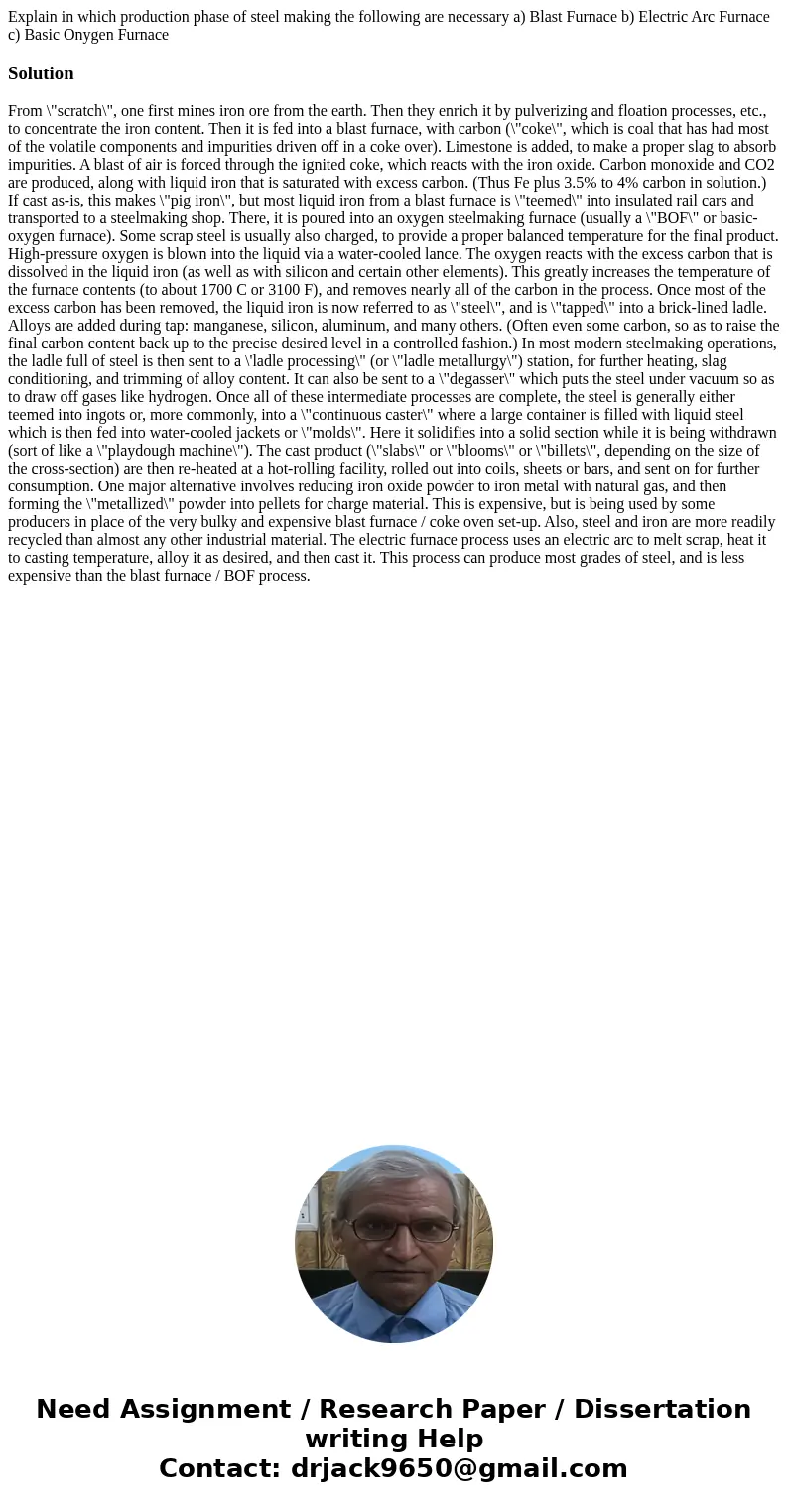Explain in which production phase of steel making the follow
Solution
From \"scratch\", one first mines iron ore from the earth. Then they enrich it by pulverizing and floation processes, etc., to concentrate the iron content. Then it is fed into a blast furnace, with carbon (\"coke\", which is coal that has had most of the volatile components and impurities driven off in a coke over). Limestone is added, to make a proper slag to absorb impurities. A blast of air is forced through the ignited coke, which reacts with the iron oxide. Carbon monoxide and CO2 are produced, along with liquid iron that is saturated with excess carbon. (Thus Fe plus 3.5% to 4% carbon in solution.) If cast as-is, this makes \"pig iron\", but most liquid iron from a blast furnace is \"teemed\" into insulated rail cars and transported to a steelmaking shop. There, it is poured into an oxygen steelmaking furnace (usually a \"BOF\" or basic-oxygen furnace). Some scrap steel is usually also charged, to provide a proper balanced temperature for the final product. High-pressure oxygen is blown into the liquid via a water-cooled lance. The oxygen reacts with the excess carbon that is dissolved in the liquid iron (as well as with silicon and certain other elements). This greatly increases the temperature of the furnace contents (to about 1700 C or 3100 F), and removes nearly all of the carbon in the process. Once most of the excess carbon has been removed, the liquid iron is now referred to as \"steel\", and is \"tapped\" into a brick-lined ladle. Alloys are added during tap: manganese, silicon, aluminum, and many others. (Often even some carbon, so as to raise the final carbon content back up to the precise desired level in a controlled fashion.) In most modern steelmaking operations, the ladle full of steel is then sent to a \'ladle processing\" (or \"ladle metallurgy\") station, for further heating, slag conditioning, and trimming of alloy content. It can also be sent to a \"degasser\" which puts the steel under vacuum so as to draw off gases like hydrogen. Once all of these intermediate processes are complete, the steel is generally either teemed into ingots or, more commonly, into a \"continuous caster\" where a large container is filled with liquid steel which is then fed into water-cooled jackets or \"molds\". Here it solidifies into a solid section while it is being withdrawn (sort of like a \"playdough machine\"). The cast product (\"slabs\" or \"blooms\" or \"billets\", depending on the size of the cross-section) are then re-heated at a hot-rolling facility, rolled out into coils, sheets or bars, and sent on for further consumption. One major alternative involves reducing iron oxide powder to iron metal with natural gas, and then forming the \"metallized\" powder into pellets for charge material. This is expensive, but is being used by some producers in place of the very bulky and expensive blast furnace / coke oven set-up. Also, steel and iron are more readily recycled than almost any other industrial material. The electric furnace process uses an electric arc to melt scrap, heat it to casting temperature, alloy it as desired, and then cast it. This process can produce most grades of steel, and is less expensive than the blast furnace / BOF process.

 Homework Sourse
Homework Sourse